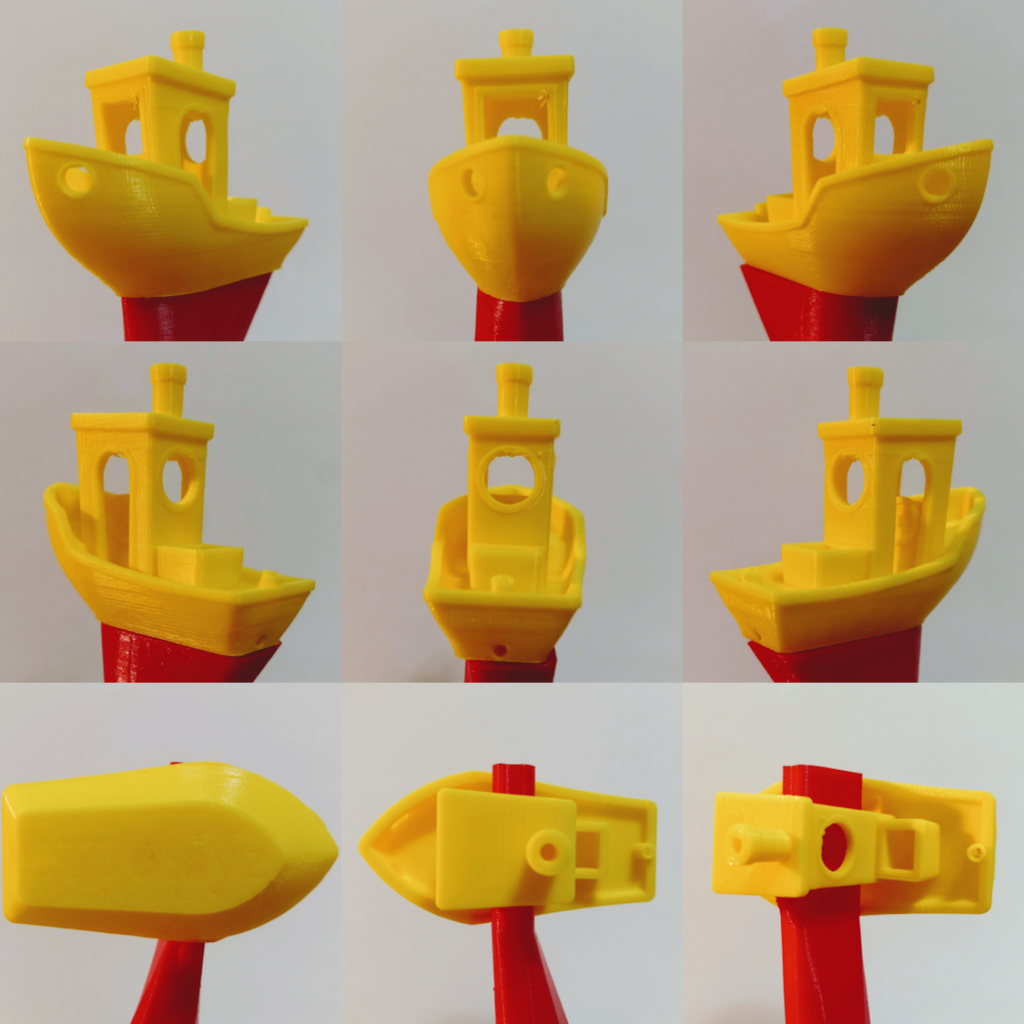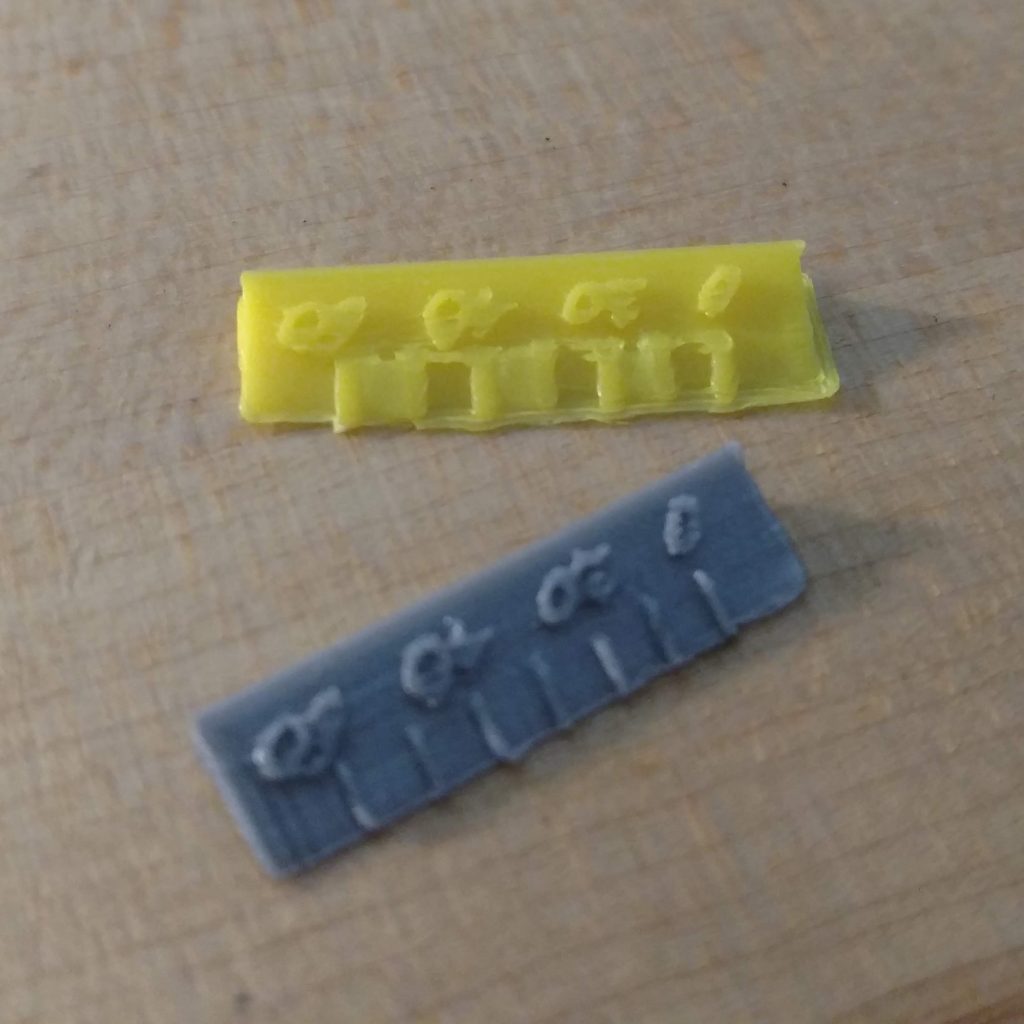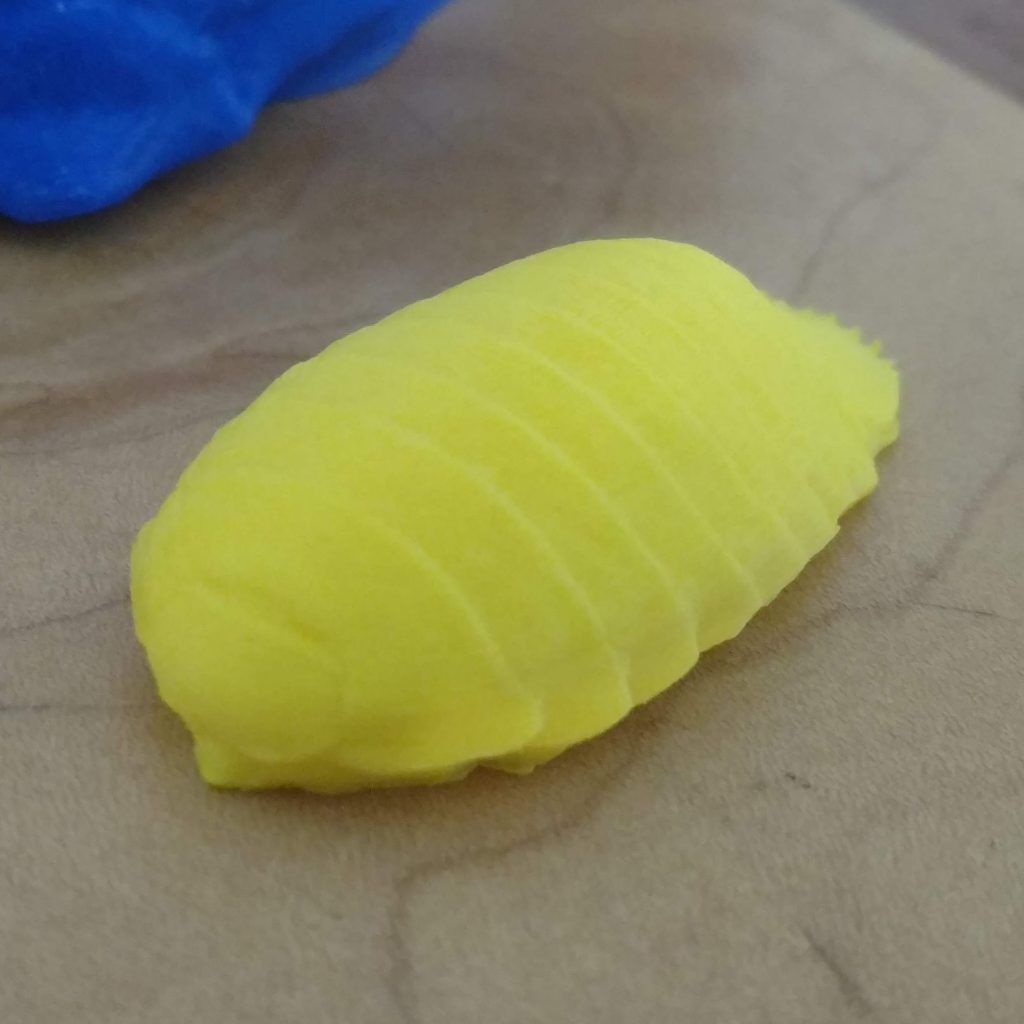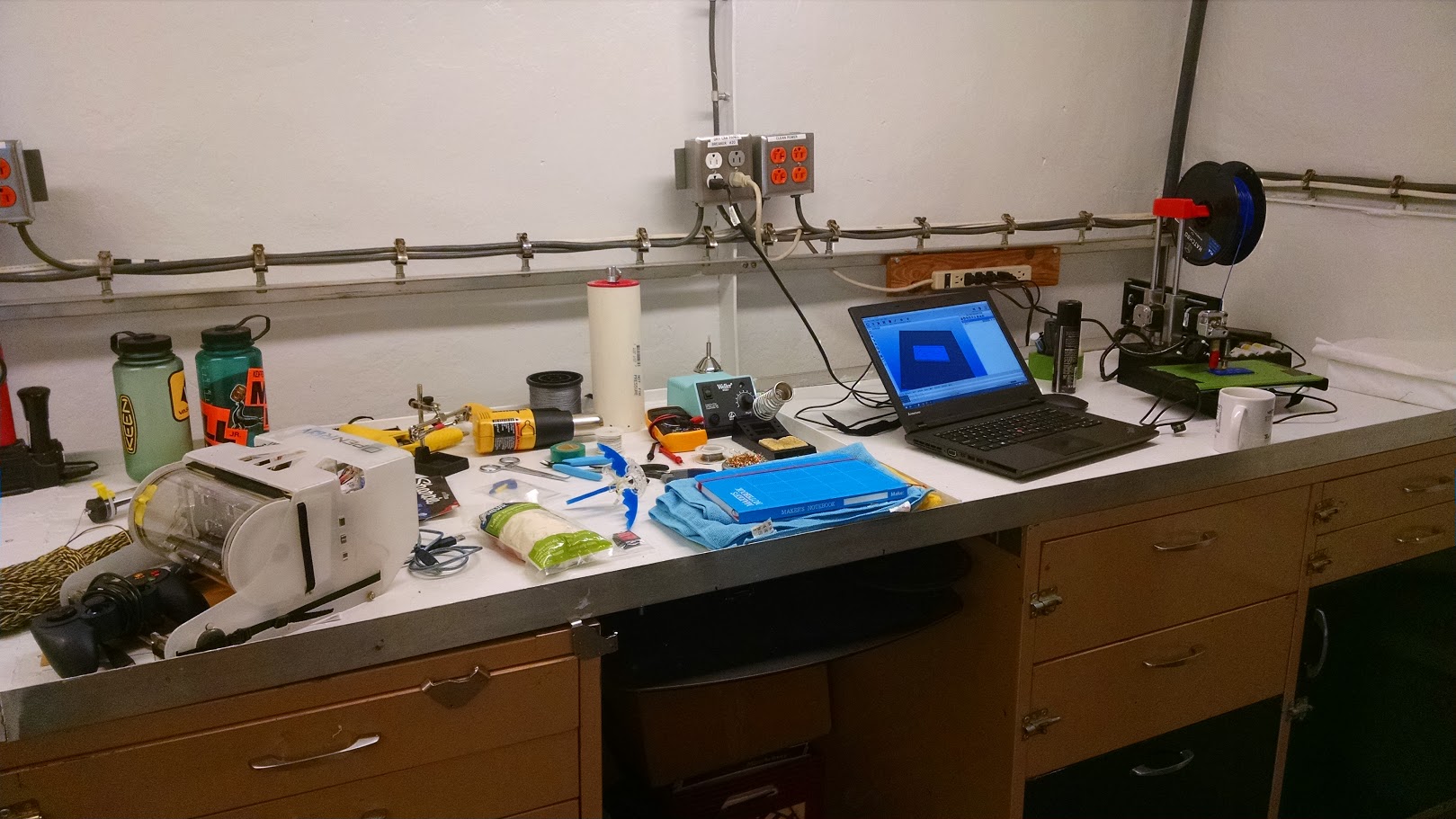Monoprice, the king of rebadged 3D printers, has two entries in the sub-$200 printer category. We already dug into the guts of the Mini Delta, a great little delta-style printer, and now it’s time for the Monoprice Select Mini! This is a pretty standard cantilever printer, with the x-axis tied to the print bed and an y-axis connected by a single support to a moving gantry. It’s basic, but solid, with a bare-bones set of features that gets the job done.
The Monoprice Select Mini is currently for sale on Amazon for $189. I got mine in white because every other printer manufacturer has decided that you can have whatever color you want as long at it’s matte black.

There is also a Select Mini Pro which, since this review series started, has been discounted to $199. It does look like it has some nice features that make it wort the extra $11, including an automatic bed leveler, magnetic build plate, and touch screen. The budget for this series is blown, but if Monoprice wants to send us one *hint hint* I’ll be happy to put it through the wringer.
Monoprice is a rebadger, as we explained in the Delta review, and this printer is identical to the Malyan M200, which itself seems to be an improvement on the Infitary R100.
This is the only printer in our series with steel construction, so I have high hopes that it will stand up to the abuse I’m about to heap upon it.
For an explanation of our testing protocols, please see: We’re gonna beat the heck out of these machines: The search for the best dirt-cheap 3D printer for fieldwork.
The Burn In.
Like the Delta Mini, the Mini Select came ready to print out of the box. Unpacking to first print was less than 5 minutes.

For some reason, low-cost printer manufacturers seem to think that users hate power switches. Even the Printrbot Simple Metal is free of a simple switch to turn the machine on and off. You have to pull the plug, every time. Combined with a janky power supply that sparks every time you plug it in, and these low-end printers are just waiting to ignite.
Even my goofy step-stepping robot has a power switch.
The Monoprice Select Mini bucks this trend. Not only is the power supply the best I’ve seen during these tests, but it has an actual, physical power switch!
Was that so hard?
Burn-in Score: A
The Benchmark Test.
I am really disappointed in this Benchy. It’s not quite as bad as the Anet A6, but there’s definitely some notable flaws.

There is stringing around the bridges and portholes, the bow is slightly deformed from heat, and the letters on the bottom are unreadable. This is one of those printers, though, that I feel like with a few more tweaks, it could be a perfect Benchy. For field work, where you can assume the settings will never be perfect (and parts will move around), this is probably as good as you’ll get.
Benchmark Score: B
The Replication Test.
There was some minor variation in the first layer, but otherwise the three Cute Octos came out indistinguishable from each other.

Replication Score: A
The Functional Parts Test.
There’s nothing special about this print but also no major flaws. The threads are clean and unobstructed. Both the nut and the bolt fit together well, hold tightly, and spin freely. Nice!

Functional Part Score: A
The Complex System Test.
After seeing how well the other prints turned out, this part genuinely surprised me. Despite no visible red flags, the assembled Niskin3D did not fire. After a thorough examination to determine whether I made an error in assembly, I realized that the tolerances were slightly off and there was the tiniest amount of over-extrusion on the base layer, causing the pin to catch. A quick pass with the deburring tool and it was firing cleanly.
That’s not a great sign. If you have to crank out a lot of water samplers, having to do post-processing on each one is going to slow down your workflow. The stringing that I saw on the Anet A6 was also present here.
Complex System Score: B
The Precision Instrument Test.
The vernier is barely legible, but it’s also the best we’ve seen so far. You can almost read the numbering.

Precision score: C
The Educator’s Test.
No complaints with this little Giant Isopod. Even the points on the telson are sharp.

Educator’s Score: A
The Tear-down.
My biggest gripe with the Monoprice Mini Delta was the build quality. It looked and felt rushed, with little care taken for the internals. Not so the Select Mini, which is a much stouter machine that clearly had a lot more attention paid to assembly. The frame is steel, with very few aluminum components, and it’s heavy. This printer can handle some serious vibration without shaking apart. The control board is firmly attached to the base and the screen and rotary encoder are secure. My big complaint about I/O is that the SD slot is so deeply nested behind a thick steel panel that it is difficult to eject.
I like the 3-piece build of the z-axis pylon. It looks good and feels really sturdy. You have to remove a lot of screws (and boy howdy does this thing use a lot of screws) before anything starts to come loose. There’s a nice thick insulating pad under the build plate, which rectifies my other big issue with the Delta. The hot bed heats up fast and distributes heat evenly across the build area. There’s no auto-leveling, but it’s easy to adjust with four set screws.
There is one huge weirdness in this set up. Almost all 3D printers use Nema 17 stepper motors. Regardless of brand or quality, these square blocks of precision torque are the standard. Most have 200 steps per rotation, though really fancy ones can have 400 steps per rotation. Monoprice has gone a different direction, using this low-end tin pot stepper motor that has only 42 steps per rotation. At $2, it is quite a bit cheaper than a generic Nema 17, so you can credit this component for the low price of the Select Mini, especially since Monoprice is almost certainly getting them at a huge wholesale discount (there’s also a branded stepper motor for this printer that sells for $15, but it appears to be the exact same part as the $2 motor). These motors are achingly slow, which you can plainly see when homing the z-axis after a tall print, but you’re unlikely to notice it while printing.
This printer passed all but the toughest of our tests, so clearly this was a worthwhile trade-off.
The weird thing is that there are unused mounting points for a Nema 17, which leads me to believe that either the Malyan M200 or the Inifitary R100 originally came with the beefier motor and this was one of the tweaks Monoprice did when they rebadged the printer.
There was a small amount of wear around the x-axis motor where it looked like a belt was rubbing against a tension gear. The gantry was also flimsier than I would like and I worry that, over time, it will start to sag and throw the y-axis out of alignment. This printer came packed with plenty of grease, so there should be no worries about lubricating the parts anytime soon.
Tear-down Score: B
The Trash Test.
Print failures were extremely rare and this machine barely needed any support.
Total mass of waste filament: 7.00g
Reviewer’s Discretion.
There are a few things I’d change with this printer. The gantry feels flimsy and I worry that it will be easily bent (the Printrbot was once thrown across our dry lab, in heavy seas. It somehow was no only undamaged, but finished its print). There is a support system on Thingiverse that you can use to reinforce the gantry. The non-standard z-axis motor will be hard to replace in the field but I’m curious about the Nema 17 mounting points and how difficult it would be to swap to a higher-resolution stepper. The good folks at Hackaday have explored this a bit.
After tear down and reassembly, the Benchy actually came out better than the test print. That tells me that with a bit more tweaking, you can get some really refined prints. Or you could go all in on mods and upgrade this thing into a serious printing beast.
Final Assessment.
I like this printer. By a wide margin it is the toughest of those in this review series. The all-metal construction is a huge plus, the build area is reasonable, and the footprint is small. It has some nice features, including a power switch (!) and rotary encoder that make it more usable than most. It holds its settings through abuse and is easy to service and repair in the field.
It’s still a sub-$200 printer, so you won’t be wowed by the print quality, but it will absolutely get the job done.
Final Score: B+
The rankings so far
- Creality Ender-3 (with upgrades): A
- Monoprice Select Mini: B+
- Monoprice Mini Delta: B-
- Creality Ender-3 (unmodified): B-
- Anet A6: D+
- iNSTONE Desktop DIY: No
We’ve still got two printers to review, the $99 iNSTONE DIY and the $194 Creality Ender3, so check back soon for the final results!
Depending on how successful this project is, I may expand to include printers in the $200 to $400 price range. If you want to help make that happen, you can either use the Amazon Affiliate links in the post to buy printers, consumables, anything else or you can sign up for my Patreon and help support Southern Fried Science.
